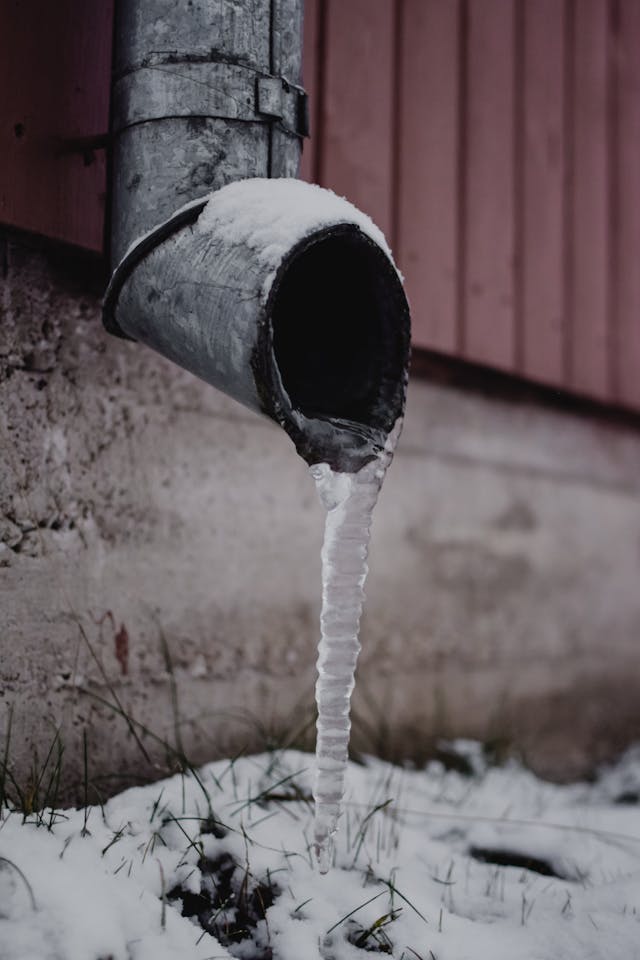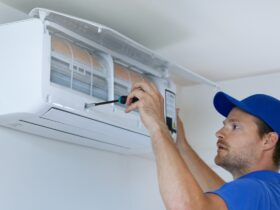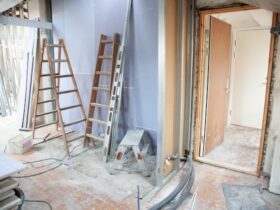Okay, imagine this. It’s freezing outside. Your windows are fogged up, and you’re wrapped in a blanket. Everything’s calm—until you hear a weird pop coming from the wall. A few minutes later, water starts dripping from the ceiling. That’s your pipes throwing a fit because they hate winter.
Most people don’t think much about their plumbing until something breaks. But when it’s cold out, your pipes are under a lot of stress. They can freeze, crack, or even burst, and that can cause a total mess in your home. The good news? You don’t need to be a plumbing genius to prevent it. You just need to know what’s going on and how to stop it before it gets bad.
Why Cold Weather Messes with Pipes
Water is kind of weird. When it freezes, it doesn’t shrink like most things. It actually expands. If water freezes inside a pipe, it pushes out against the sides. Pipes aren’t made to stretch, so they can crack or burst. That’s where the leaks, flooding, and damage come in.
Pipes that are in colder spots—like basements, attics, garages, or along outside walls—are the most at risk. Even pipes inside a house can freeze if they don’t get enough warm air around them.
Here’s the tricky part: pipes don’t always burst at the spot where the water froze. Sometimes the pressure builds up and the pipe breaks somewhere else. So you might not even notice the real cause until the damage is already done.
If you live somewhere with cold winters, like San Bernardino when those random cold snaps hit, it helps to know a reliable expert. If things ever get out of hand, it’s smart to reach out to a Plumber in San Bernardino who knows how to handle frozen or burst pipes without making the problem worse.
How to Know Your Pipes Might Be Freezing
There are a few warning signs that pipes could be in trouble, and it’s good to catch them early. If water slows down or stops coming out when you turn on a faucet, it could mean a pipe is frozen somewhere. You might also hear banging, clanging, or popping sounds inside the walls—that’s not just the house settling, it’s pressure building up.
Another sign is frost on the outside of pipes, especially the ones you can see under sinks or in basements. If you spot that, it means the inside is probably just as cold. And if there’s a weird smell coming from a faucet or drain, it might be because ice is blocking the pipe and air is getting trapped.
What to Do If You Think a Pipe Froze
If you catch a pipe before it bursts, you can save a ton of time, money, and cleanup. First, turn off the water supply to that area. You don’t want water to suddenly come rushing through if the ice melts or a pipe bursts.
Next, gently warm up the frozen section. A hair dryer works really well—just don’t use anything like a blowtorch or open flame. That’s super dangerous. You can also wrap the pipe in warm towels or use a heating pad.
Keep the faucet open while you’re doing this. That helps relieve pressure and gives the melting water somewhere to go. If nothing works or you can’t get to the frozen spot, it’s better to call a pro before something worse happens.
How to Stop Pipes from Freezing in the First Place
Prevention is way easier than fixing things after a pipe breaks. Here are some simple ways to stop pipes from freezing, especially in winter:
1. Let the warm air in.
Open cabinets under sinks to let the heat from the room reach the pipes. That little bit of warmth can make a big difference.
2. Keep water moving.
Running water doesn’t freeze as easily. If it’s going to be really cold at night, let a small trickle of water run from a faucet. It doesn’t have to be a lot—just enough to keep the flow going.
3. Insulate the pipes.
Pipe insulation is cheap and easy to wrap around exposed pipes. Foam tubing or even old towels work if you’re in a pinch.
4. Don’t turn off the heat.
Even if you’re leaving the house for a few days, keep the thermostat at least 55°F. The inside of the house needs to stay warm enough so the pipes don’t freeze.
5. Seal up the gaps.
Cold air can sneak in through holes and cracks around pipes, especially where they come through walls. Use caulk or insulation to block off those spots and keep the warm air inside.
What Happens If a Pipe Bursts Anyway?
Sometimes, even when you do everything right, a pipe still breaks. If that happens, it’s important to act fast. Shut off the main water valve right away. That stops more water from pouring out and causing damage. Then turn off electricity in the area if water is getting close to outlets or wires.
After that, you can try to clean up any standing water with towels or a wet/dry vacuum. But don’t start tearing into the walls or cutting pipes. That’s a job for a pro. A licensed plumber can figure out exactly where the break is and fix it safely. It’s not the kind of thing you want to guess your way through.
Why Winter Pipe Damage Costs So Much
Broken pipes aren’t just annoying. They can wreck floors, walls, furniture, and electronics. If water leaks into places it shouldn’t be—like inside your walls or under the floor—it can cause mold or rot that keeps getting worse even after the pipe is fixed.
And insurance doesn’t always cover everything. If the damage was caused by not taking care of your pipes, some policies might not help at all. That’s why it’s a smart idea to stop problems before they start.
What to Remember
Winter is tough on pipes, but it doesn’t have to be a disaster. Pipes freeze because water expands when it turns to ice, and that pressure can make them crack or burst. You can prevent that by keeping them warm, letting water drip during cold nights, and insulating the ones that are exposed. If something still goes wrong, turn off the water fast and call someone who knows what they’re doing.
Just a little bit of planning can save you from a huge mess later on. So when it starts getting chilly, don’t just think about staying warm—make sure your pipes are too.
And hey, now you know way more about plumbing than most people do. That’s kind of cool, right?








Leave a Reply